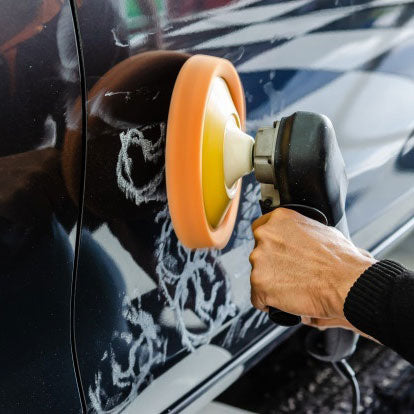Becoming a body piercer in Australia isn’t just about the act of performing the piercing and creating body art. It’s a journey that intertwines passion, perseverance, technical skills, and personal growth.
The piercing industry today demands more than just skill with tools — it expects professionalism, deep client care, strong hygiene standards, and continuous education.
I want to discuss here with you a step-by-step on what it takes to not just become a body piercer in Australia, but to thrive in this continually changing, creative industry.
Find Your Passion and Drive

Before any training, courses, or apprenticeships, the first step comes from within: Passion
Body piercing is intimate, personal, and often symbolic for clients. As a piercer, you become part of some of the most significant moments in people's lives. Whether its first piercings, cultural rites of passage, memorial jewellery, and personal transformations. It's not a job that you can do half-heartedly. Along my journeys as a piecer, I have come across some amazing people, many I have been provide services to for years now and some even becoming part of my close friends.
Many successful piercers speak of an early fascination with body modification. Some recall their awe at seeing a friend’s nose stud for the first time, or the transformative power of a carefully curated ear arrangement. This passion is what fuels inspired piercing enthusiasts with the desire to learn more
If you're not genuinely passionate about body art, aesthetics, and caring for people, it's unlikely you will endure the demanding early years. Piercing requires empathy, attention to detail, resilience, and a deep respect for the human body. Make sure you’re in it for the right reasons — love for the art, the people, and the craft — not just for the fashion accessory.
Ask yourself — do I love body modification culture? Am I willing to work hard, study anatomy, learn hygiene practices meticulously, and handle the emotional side of piercing clients? If yes, you’re ready to take the next step.
Understanding the Role of Apprenticeships (and Their Limitations)

Traditionally, most piercers learned through apprenticeships which is the act of shadowing an experienced professional and learning through observation, assistance, and gradual hands-on experience.
While apprenticeships still exist, they have become increasingly rare and competitive in Australia. The structure and quality of apprenticeships can vary drastically depending on the studio and mentor.
In some areas, a reputable studio might only accept one apprentice every two or three years, if at all. Often, studios expect applicants to already hold an Infection Control certificate and have basic knowledge about skin anatomy and jewellery types before even considering them.
Reality Check:
- Unpaid Work: Many apprenticeships are unpaid or poorly paid.
- Slow Progression: You might spend months or even years cleaning, setting up, and observing before being allowed to perform basic piercings.
- No Guarantees: Some apprenticeships end without the apprentice becoming a piercer due to studio closures, mentor burnout, or unmet expectations.
Why Formal Training Is Often a Better Option:

Today, completing an accredited body piercing course is a faster, more structured, and often more reliable path.
Accredited training ensures:
- A solid foundation in infection control (a legal requirement for practicing in some states of Australia).
- Training in anatomy, aftercare procedures, jewellery fitting, and adverse complications.
- Hands-on practice under the supervision of trained instructors.
- A nationally recognised qualification, making it easier to secure work at reputable studios.
If you do want to pursue an apprenticeship, strengthen your application by completing a course first. Studios will view you as a lower-risk investment and take you more seriously.
How to complete Accredited Training

Formal education has become a crucial step for aspiring piercers in Australia. Not just because of the technical skills, clients and insurance companies but for future body piercers to meet health, safety, and professional standards.
When look for a reputable Registered Training Organisations (RTOs) or industry-recognised private educators who offer piercing courses, it is prevalent that they include:
- HLTINF005 - Maintain Infection Prevention for Skin Penetration Procedures (or the updated equivalent).
- Anatomy-focused modules covering safe placement for various piercings.
- Practical components offering real-world practice.
- Business and ethics training (dealing with clients, understanding regulations).
A comprehensive body piercing course typically covers areas like:
- Sterilisation techniques and autoclave use.
- Needle techniques for different piercing styles.
- Jewellery selection, sizing, and troubleshooting.
- Managing client consultations and aftercare support.
- Understanding contraindications (when not to pierce).
Benefits of Accredited Training:

- Eligibility for professional insurance.
- Recognition by councils and health authorities.
- A foundation that gives you confidence to practice safely.
- Quicker entry into studio work compared to years-long apprenticeships.
Check reviews, speak to past students, and verify the trainer's industry experience before enrolling. Not all piercing courses are created equal!
From here we need to build your personal brand and network
Success in body piercing goes beyond technique, it is also about building your reputation. The Australian body art community is tight-knit; word of mouth, social media presence, and professional connections matter immensely.
A number of successful piercers have launched their careers by immersing themselves in the body art community early on. They attend industry conventions, webinars, and actively engage in online forums and social media groups dedicated to piercing. Others begin their journey working at the front desk of tattoo or piercing studios, using the opportunity to observe daily operations, demonstrate dedication, and gradually earn the trust of experienced professionals — eventually stepping into piercing roles themselves.

Practical Ways to Build Your Brand:
- Create a professional Instagram or website showcasing your work, certifications, and testimonials.
- Network actively: Attend local and international piercing conferences, workshops, and industry nights.
- Join associations: Organisations like the Body Piercing Association Australia (BPAA) or Association of Professional Piercers (APP) to offer community, resources, and credibility.
- Engage with clients authentically: Providing great customer service leads to positive reviews, recommendations, and returning clients.
Remember, your reputation is your resume. Studios often prefer hiring someone they’ve heard good things about rather than sifting through cold applications.
Keep Learning!!

The piercing industry constantly evolves — new jewellery innovations, improved techniques, advanced aftercare protocols, and emerging styles mean learning never stops.
A piercer who trained five years ago without updating their skills might still be using outdated techniques that increase healing times or risk scarring. On the other hand, piercers who continually attend workshops stay at the forefront will earn a loyal client base.
Ways to Stay Current:
- Attend advanced workshops in specialised techniques (e.g., surface anchors, custom ear projects, genital piercings).
- Stay updated on health regulations and infection control standards.
- Regularly invest in high-quality tools and jewellery.
- Follow industry leaders online, join professional forums, and subscribe to relevant publications.
- Continue learning about client communication and mental health and first aid — helping anxious clients is a skill that can set you apart.
Set aside a professional development budget each year for courses, conventions, and tools. Lifelong learning ensures you stay passionate, relevant, and in-demand.
The Realities of Building a Long-Term Career

While body piercing can be a fulfilling career, it’s essential to enter the industry with realistic expectations. Success often comes gradually, not overnight.
Challenges Include:
- Slow building of clientele: Trust takes time, especially in smaller communities.
- Inconsistent income initially: Especially if you're renting space or working on commission.
- Physical toll: Standing for long hours, focusing on small details, and dealing with anxious clients can be taxing.
- Mental resilience: Handling mistakes (they will happen), difficult customers, and industry politics.
Rewards Include:
- Creative fulfillment: Helping clients express themselves through beautiful, meaningful piercings.
- Strong community ties: Many piercers describe the industry as a second family.
- Financial independence: Experienced, reputable piercers with strong client bases often enjoy stable, rewarding incomes.
- Opportunities for growth: Teaching, opening your own studio, developing jewellery lines, or becoming an educator yourself.

Becoming a body piercer in Australia is a journey of both skill development and personal growth. Whether you enter through a rare apprenticeship or, more reliably, through accredited training, your passion, resilience, and ongoing commitment to excellence will determine your success.
The steps again:
- Find your passion and prepare for hard work.
- Understand both apprenticeships and the power of formal education.
- Complete accredited, comprehensive training.
- Build your personal brand, network, and reputation.
- Stay driven and embrace lifelong learning.
If you combine technical skills with passion, curiosity, and a genuine love for body art, you’ll carve out a thriving career not just as a piercer, but as an artist, professional, and trusted guide for countless clients on their body art journeys.
For more information on available body piercing courses please click the links below:
Available Body Piercing Courses
- - Jaz Anna



